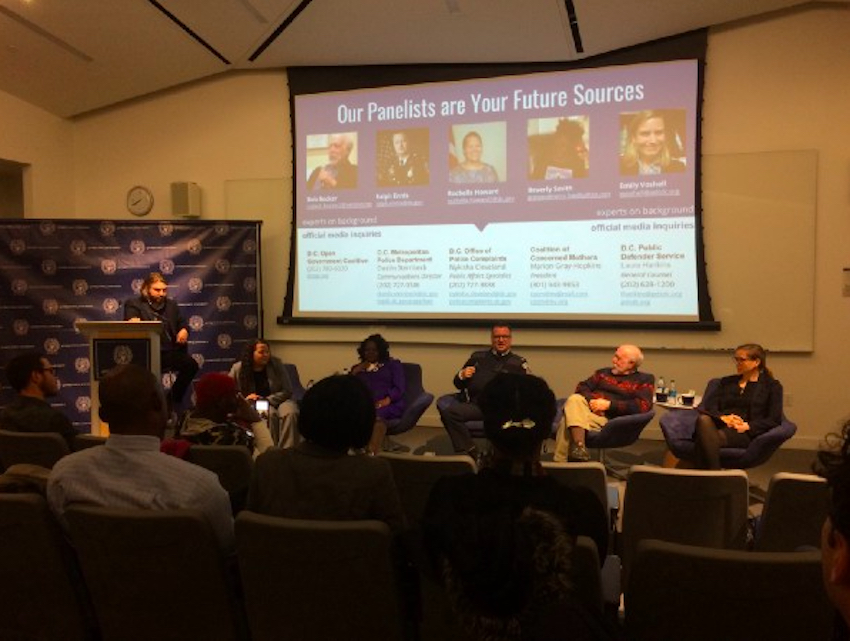
By Jonathan Make
SPJDC Vice President
At a thought-provoking Society of Professional Journalists D.C. Pro Chapter panel discussion last night at Georgetown University’s downtown campus, stakeholders on all sides of the police-worn body camera issue had something interesting to say. And reading between the lines, a journalist could come away from the discussion with story ideas for how to use the resulting video and data in reporting.
One area of sharp disagreement relates to police accountability. Beverly Smith, organizer of the Coalition of Concerned Mothers, has her doubts. She thinks that the mayor, who has authority to release any body-worn camera audio and video, only will do this when it casts officers in a favorable light. And she said that the presence of these cameras has done nothing to stop police violence against civilians.
One thing panelists all seem to agree on is that Washington’s Metropolitan Police Department is among the most aggressive in the country at deploying this technology. All street-patrol officers now have them. And the city is in the midst of what sounds like an impressive, wide-ranging randomized study of the impact of the body cameras on police behavior. D.C. officials suggested the results may become public later this year.

Others said that the cameras do help hold the authorities accountable to the public and in court. Rochelle Howard, deputy director of the D.C. Office of Police Complaints, said that sometimes the resulting video supports the police version of disputed events. In other instances, it supports potential or actual criminal defendants, she said.
Officer behavior has changed as a result of wearing the cameras, said Ralph Ennis, commander of MPD’s Tactical Information Division. Although he can’t be more specific, he said these devices are having an impact, and said the ongoing study of them is the biggest in the nation. He said the technology was rolled out carefully and gradually so that the department could get buy-in from officers, the union and other stakeholders. He stressed that police supervisors don’t use the footage to play gotcha with officers and only look at it if there is a complaint or commendation.
SPJ member Robert Becker, representing the D.C. Open Government Coalition, said there are many limits on what video gets made public through the Freedom of Information Act process. His coalition met some success in opposing Mayor Muriel Bowser’s attempt to keep more of this video secret. One thing he wondered about at the panel was the metadata from these devices and whether that could be useful.
Based on discussions after the panel and judging by what speakers said, local reporters could potentially find a wealth of information about police activities by analyzing this metadata. Assuming it could be made public. And although much of the footage ends up being redacted — and is entirely private when it occurs inside a private dwelling as opposed to on the street — what is publicly available through FOIA could probably make for some interesting news stories.
You can watch the full discussion here, courtesy of our hosts, The Georgetown University Masters in Journalism Program:
For more coverage of this event, see the Twitter feeds of SPJDC, Georgetown Journalism, TV reporter Rochelle Metzger, and of the makejdm blog. Thanks to SPJDC’s Elizabeth Grisham for the photos. SPJDC’s Eric Falquero organized this event.
